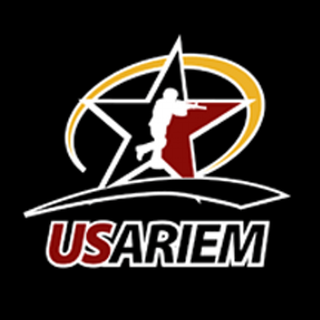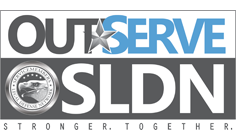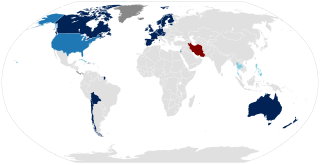
"Don't ask, don't tell" (DADT) was the official United States policy on military service of non-heterosexual people. Instituted during the Clinton administration, the policy was issued under Department of Defense Directive 1304.26 on December 21, 1993, and was in effect from February 28, 1994, until September 20, 2011. The policy prohibited military personnel from discriminating against or harassing closeted homosexual or bisexual service members or applicants, while barring openly gay, lesbian, or bisexual persons from military service. This relaxation of legal restrictions on service by gays and lesbians in the armed forces was mandated by Public Law 103–160, which was signed November 30, 1993. The policy prohibited people who "demonstrate a propensity or intent to engage in homosexual acts" from serving in the armed forces of the United States, because their presence "would create an unacceptable risk to the high standards of morale, good order and discipline, and unit cohesion that are the essence of military capability".

Hypothermia is defined as a body core temperature below 35.0 °C (95.0 °F) in humans. Symptoms depend on the temperature. In mild hypothermia, there is shivering and mental confusion. In moderate hypothermia, shivering stops and confusion increases. In severe hypothermia, there may be hallucinations and paradoxical undressing, in which a person removes their clothing, as well as an increased risk of the heart stopping.

Frostbite is a skin injury that occurs when exposed to extremely low temperatures, causing the freezing of the skin or other tissues, commonly affecting the fingers, toes, nose, ears, cheeks and chin areas. Most often, frostbite occurs in the hands and feet. The initial symptoms are typically a feeling of cold and tingling or numbing. This may be followed by clumsiness with a white or bluish color to the skin. Swelling or blistering may occur following treatment. Complications may include hypothermia or compartment syndrome.

Aviation medicine, also called flight medicine or aerospace medicine, is a preventive or occupational medicine in which the patients/subjects are pilots, aircrews, or astronauts. The specialty strives to treat or prevent conditions to which aircrews are particularly susceptible, applies medical knowledge to the human factors in aviation and is thus a critical component of aviation safety. A military practitioner of aviation medicine may be called a flight surgeon and a civilian practitioner is an aviation medical examiner. One of the biggest differences between the military and civilian flight doctors is the military flight surgeon's requirement to log flight hours.
Airsickness is a specific form of motion sickness which is induced by air travel and is considered a normal response in healthy individuals. Airsickness occurs when the central nervous system receives conflicting messages from the body affecting balance and equilibrium. Whereas commercial airline passengers may simply feel poorly, the effect of airsickness on military aircrew may lead to a decrement in performance and adversely affect the mission.
Lesbian, gay, bisexual, transgender, and queer (LGBTQ) personnel are able to serve in the armed forces of some countries around the world: the vast majority of industrialized, Western countries including some South American countries such as Argentina and Chile in addition to South Africa, and Israel. The rights concerning intersex people are more vague.
The Varying Permeability Model, Variable Permeability Model or VPM is an algorithm that is used to calculate the decompression stops needed for ambient pressure dive profiles using specified breathing gases. It was developed by D.E. Yount and others for use in professional diving and recreational diving. It was developed to model laboratory observations of bubble formation and growth in both inanimate and in vivo systems exposed to pressure. In 1986, this model was applied by researchers at the University of Hawaii to calculate diving decompression tables.

The U.S. Army Research Institute of Environmental Medicine (USARIEM) is the U.S Army’s main institution and facility for military environmental medicine and exercise physiology research. It is located at Natick, Massachusetts, within the U.S. Army Soldier Systems Center (SSC) installation, but is a subordinate lab of the U.S. Army Medical Research and Materiel Command (USAMRMC), headquartered at Fort Detrick, Maryland, USA.

The Aerospace Medical Association (AsMA) is the largest professional organization in the fields of aviation, space, and environmental medicine. The AsMA membership includes aerospace and hyperbaric medical specialists, scientists, flight nurses, physiologists, and researchers from all over the world.
The United States military formerly excluded gay men, bisexuals, and lesbians from service. In 1993, the United States Congress passed, and President Bill Clinton signed, a law instituting the policy commonly referred to as "Don't ask, don't tell" (DADT), which allowed gay, lesbian, and bisexual people to serve as long as they did not reveal their sexual orientation. Although there were isolated instances in which service personnel were met with limited success through lawsuits, efforts to end the ban on openly gay, lesbian, and bisexual people serving either legislatively or through the courts initially proved unsuccessful.

Cold injury is damage to the body from cold exposure, including hypothermia and several skin injuries. Cold-related skin injuries are categorized into freezing and nonfreezing cold injuries. Freezing cold injuries involve tissue damage when exposed to temperatures below freezing. Nonfreezing cold injuries involve tissue damage when exposed to temperatures often between 0-15 degrees Celsius for extended periods of time. While these injuries have disproportionally affected military members, recreational winter activities have also increased the risk and incidence within civilian populations. Additional risk factors include homelessness, inadequate or wet clothing, alcohol abuse or tobacco abuse, and pre-existing medical conditions that impair blood flow.

OutServe-SLDN was a network of LGBT military personnel, formed as a result of the merger between OutServe and the Servicemembers Legal Defense Network. OutServe-SLDN was one of the largest LGBT employee resource groups in the world. OutServe was founded by a 2009 graduate of the US Air Force Academy, Josh Seefried and Ty Walrod. There were over 7,000 members and 80 chapters worldwide.

The Outwords Archive (OUTWORDS) is a nonprofit organization based in Los Angeles. It records and archives on-camera interviews with elders from the LGBTQ+ community throughout the United States.
Gordon Grant Giesbrecht is a Canadian physiologist who operates the Laboratory for Exercise and Environmental Medicine at the University of Manitoba in Manitoba, Canada. He studies the effects of extreme environments, including cold, heat, hypoxia, and hypobaria on the human body. His laboratory motto is vitas salvantas. He was dubbed "Professor Popsicle" in a feature article in Outside Magazine.

Not all armed forces have policies explicitly permitting LGBT personnel. Generally speaking, Western European militaries show a greater tendency toward inclusion of LGBT individuals. As of January 2021, 21 countries allow transgender military personnel to serve openly: Australia, Austria, Belgium, Bolivia, Brazil, Canada, Chile, Czechia, Denmark, Estonia, Finland, France, Germany, Ireland, Israel, the Netherlands, New Zealand, Norway, Spain, Sweden, and the United Kingdom. Cuba and Thailand reportedly allowed transgender service in a limited capacity. In 1974, the Netherlands was the first country to allow transgender military personnel. The United States has allowed transgender personnel to serve in the military under varying conditions since President Joe Biden signed an executive order that allowed them to do so.
Aaron Belkin is a political scientist, researcher and professor. He currently teaches political science at San Francisco State University and is the director of the Palm Center, a think tank that commissions and disseminates research on gender, sexuality and the military.

The United States Armed Forces have a long history of transgender service personnel, dating back to at least the Civil War. Initially, most such service members were women, who disguised themselves as men in order to serve in combat roles. Many reverted to their female identities upon leaving their service, but others maintained their male identities. In more recent years, openly transgender people have served or sought to serve in the military. The subject began to engender some political controversy starting with transgender servicemembers being banned in 1960 and possibly earlier. This controversy came to a head in the 2010s and was subjected to relatively rapid changes for the next few years. As of 2021, transgender individuals are expressly permitted to serve openly as their identified gender. A brief timeline is as follows:

In the past most lesbian, gay, bisexual, transgender, and queer (LGBTQ) personnel had major restrictions placed on them in terms of service in the United States military. As of 2010 sexual orientation and gender identity in the United States military varies greatly as the United States Armed Forces have become increasingly openly diverse in the regards of LGBTQ people and acceptance towards them.

The regulations regarding the service of intersex people in the United States Armed Forces are vague and inconsistent due to the broad nature of humans with intersex conditions. The United States Armed Forces as a whole does not officially ban intersex people from service but does exclude many based on the form of their status. Policies regarding all intersex people are not addressed formally although depending on the type of sex variation some intersex people are allowed to serve. The United States military and their requirements for service makes it so they are frequently in a unique predicament when it comes to intersex bodies. With their position of needing to discern between male and female bodies, they are exposed to a broad variety of people, such as those who are intersex whose bodies may not match either classification and are more difficult to make decisions on. This ambiguity leads to confusion regarding military medical, behavioral, and legal laws.
Non-freezing cold injuries (NFCI) is a class of tissue damage caused by sustained exposure to low temperature without actual freezing. There are several forms of NFCI, and the common names may refer to the circumstances in which they commonly occur or were first described, such as trench foot, which was named after its association with trench warfare. NFCI is caused by microvascular endothelial damage, stasis and vascular occlusion and is characterised by peripheral neuropathy. NFCI generally affects the hands or feet during exposure to temperatures just above freezing, often wet, and is typically found in soldiers.














